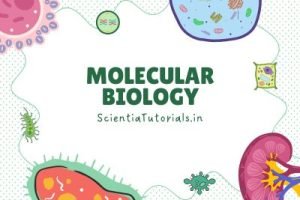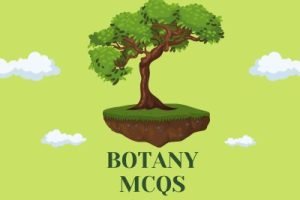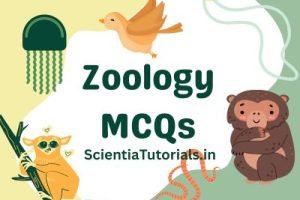MCQs on Morphology of Flowering Plants
MCQs on Morphology of Flowering Plants
1. The morphological nature of the edible part of a coconut is
a. 1. Cotyledon
b. 2. Perisperm
c. 3. Pericarp
d. 4. Endosperm
2. ———— are the non-essential parts of a flower
a. Androecium and gynoecium
b. Sepals and carpels
c. Sepals and petals
d. Sepals and gynoecium
3. Four long and two short stamens are found in
a. Asteraceae
b. Brassicaceae
c. Liliaceae
d. Solanaceae
4. A fruit developed from a condensed inflorescence is
a. Composite fruit
b. Simple fruit
c. Aggregate fruit
d. Etaerio
5. Radial symmetry is found in the flowers of
a. Cassia
b. Pisum
c. Trifolium
d. Brassica
6. The stem modified into flat, green organs performing the function of leaves
a. Phyllodes
b. Cladodes
c. Phylloclades
d. Scales
7. Leaves become modified into spines in
a. Opuntia
b. Onion
c. Silk cotton
d. Pea
8. Geocarpic fruits are formed in
a. Onion
b. Carrot
c. Groundnut
d. Watermelon
9. Testa of seed develops from
a. Hilum
b. Funicle
c. Ovary wall
d. Outer integument
10. Replum is found in the ovary of
a. Brassicaceae
b. Malvaceae
c. Liliaceae
d. Asteraceae
11. One seeded winged fruit is
a. Nut
b. Samara
c. Cypsela
d. Achene
12. Veins of the leaves are useful for
a. Mechanical support
b. Transport of water and minerals
c. Transport of organic nutrients
d. All of the above
13. Placenta and pericarp are edible portions in
a. Potato
b. Banana
c. Tomato
d. Apple
14. ———- is an edible underground stem
a. Potato
b. Groundnut
c. Sweet potato
d. Carrot
15. Vexillum is found in
a. Cruciferae
b. Rosaceae
c. Solanaceae
d. Papilionaceae
Answer Key
| 1-d | 2-c | 3-b | 4-a | 5-d | 6-c | 7-a | 8-c |
| 9-d | 10-a | 11-b | 12-d | 13-c | 14-a | 15-d |



